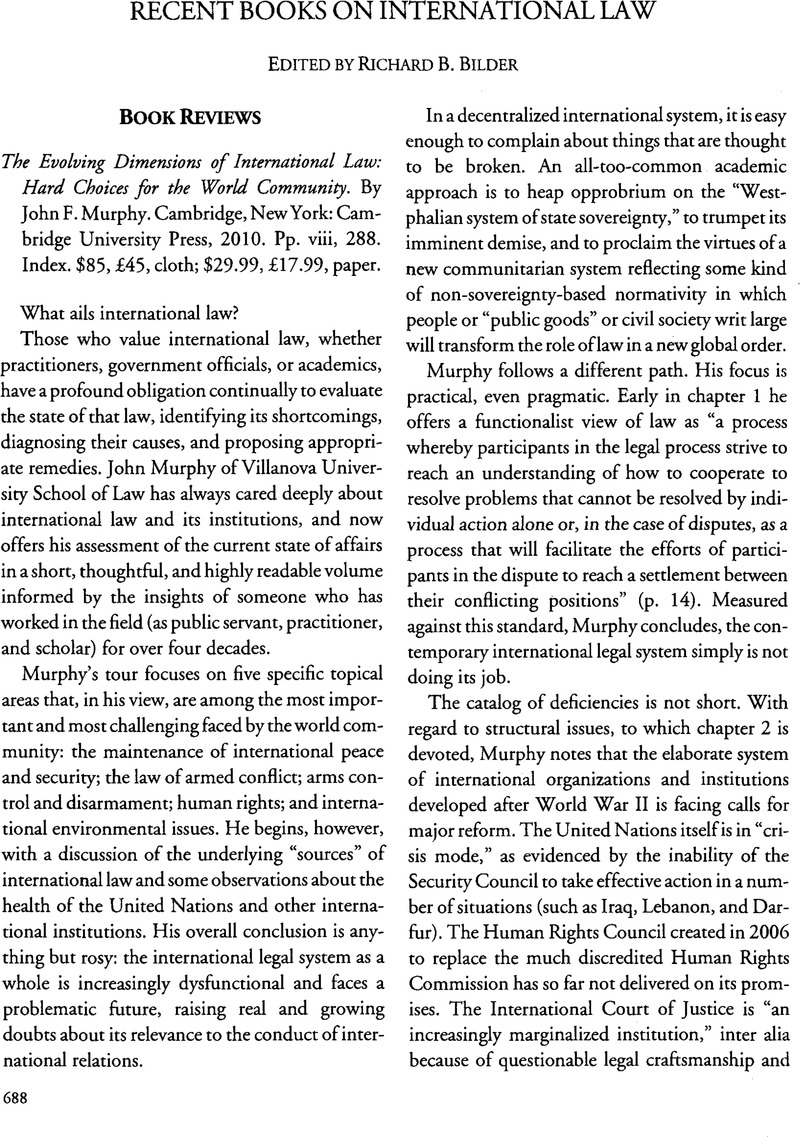No CrossRef data available.
Published online by Cambridge University Press: 27 February 2017

1 Philip, Bobbitt, Terror and Consent: The Wars for the Twenty-first Century 173 (2008)Google Scholar.
2 See, e.g., Oona, Hathaway, Do Human Rights Treaties Make a Difference, 111 Yale L.J. 1935 (2002)Google Scholar; Ryan, Goodman & Derek, Jinks, Measuring the Effects of Human Rights Treaties, 14 Eur. J. Int’l L. 171 (2003)Google Scholar.
3 SC Res. 1373 (Sept. 28,2001); SC Res. 1535 (Mar. 26, 2004)
4 Kadi v. Council, Joined Cases C-402/05 P & C-415/05 P (Eur. Ct. Justice Sept. 3, 2008) (reported by Misa Zgonec-Rožej at 103 AJIL 305 (2009)), at http://curia.europa.eu; see Peter, Fromuth, The European Court of justice Kadi Decision and the Future of UN Counterterrorism Sanctions, ASIL Insights (Oct. 30, 2009)Google Scholar.
5 Patrick Kelly, J., International Law and the Shrinking Space for Domestic Politics in Developing Countries, in Law and Rights: Global Perspectives on Constitutionalism and Governance 259, 261 (Penelope, E. Andrews & Susan, Bazilli eds., 2008)Google Scholar.
6 Here he cites with clear approval Anthony, D’Amato’s article It’s a Bird, It’s a Plane, It’s Jus Cogens! 6 Conn. J. Int’l L. 1 (1990)Google Scholar.
7 Goldsmith, Jack L. & Posner, Eric A., The Limits of International Law (2005)Google Scholar.
8 This comment brings to mind Koskenniemi’s comment that “[b]ecause the world—including the lawyers in it—is conflictual, any grand design for ‘world order’ will always remain suspect.” Manti, Koskenniemi, The Politics of International Law, 1 Eur. J. Int’l L. 4, 31 (1990)Google Scholar; see also Manti, Koskenniemi, The Politics of International Law—20 Years Later, 20 Eur. J. Int’l L. 7 (2009)Google Scholar.
9 With regard to the phenomenon of constant acceleration in events, he cites Alvin, Toffler & Heidi, Toffler, Revolutionary Wealth (2006)Google Scholar.
10 Murphy, John F., The United States and the rule of Law in International Affairs (2004)CrossRefGoogle Scholar.
11 At page 47, for example, he cites with approval Anne, Marie Slaughter & William, Burke-White, The Future of International Law Is Domestic (or, the European Way of Law), 47 Harv. Int’l L. J. 37 (2006)Google Scholar: “In my view, Slaughter and Burke-White have done us a service by focusing in their article on the reality that many of the world’s most severe international problems have their origin in nation-states and that such states are in the best position to take the actions necessary to resolve them.”